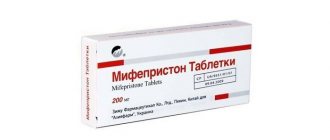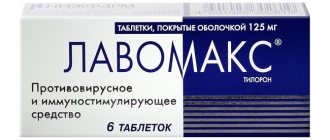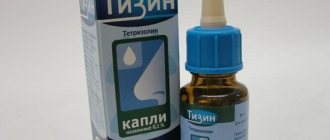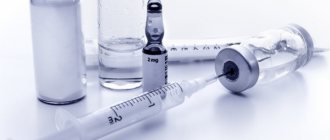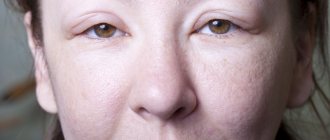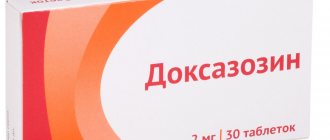pharmachologic effect
Allapinin is a class I antiarrhythmic drug. Lappaconitine is an alkaloid obtained from the wild perennial plant aconite of the buttercup family. Allapinin (lappaconitine) has a membrane-stabilizing effect, blocking the “fast” sodium channels of cardiomyocyte membranes. Allapinin causes a slowdown in atrioventricular and intraventricular conduction, shortens the effective and functional refractory periods in the atria and ventricles. It has a moderate antispasmodic, coronary dilatator, anticholinergic and sedative effect. Bioavailability is 39% - it undergoes intensive presystemic biotransformation. With intravenous administration and oral administration, the half-life is 1-1.2 hours. Penetrates through the BBB. One of the three main metabolites lowers blood pressure. When taken orally, the effect develops after 40-60 minutes, reaches a maximum after 4-5 hours and lasts 8 hours or more. Under conditions of intravenous administration, the antiarrhythmic effect manifests itself after 15-20 minutes and lasts 6-8 hours (with a maximum after 2 hours). An extension of the half-life was noted with long-term use, renal failure (2-3 times), liver cirrhosis (3-10 times).
Dosage regimen
The instructions for use recommend the drug “Allapinin” in a dosage of 25 mg once every 8 hours. In the absence of a pronounced therapeutic result, the medication is taken every 6 hours. In some cases, a single dose may be doubled (up to 50 mg). The time interval is 6-8 hours.
The maximum allowed per day is no more than 300 mg. The duration of therapy and the advisability of adjusting the dosage regimen are determined by a specialist. The medicine is taken after meals. This product must not be crushed or broken.
special instructions
If headache, dizziness, or diplopia occur, the dose should be reduced. Repeated parenteral administration is allowed only after 6 hours. If sinus tachycardia occurs during long-term use, beta-blockers (small doses) are indicated. Prescription to patients with AV block of the first degree, sick sinus syndrome and severe heart failure is possible only in a hospital setting under medical supervision and ECG monitoring. Prescribed with caution (mainly for health reasons) in the first 3 months of pregnancy.
Indications for use
supraventricular extrasystole; ventricular extrasystole; paroxysms of atrial fibrillation and flutter; paroxysmal supraventricular tachycardia (including with WPW syndrome); paroxysmal ventricular tachycardia (in the absence of organic heart lesions).
Dosage
Prescribed orally 25 mg (1 tablet) every 8 hours, in the absence of a therapeutic effect - every 6 hours.
It is possible to increase the single dose to 50 mg (2 tablets) every 6-8 hours. The maximum daily dose is 300 mg (12 tablets).
The duration of treatment and changes in the dosage regimen (increasing the dose) are determined by the doctor.
The drug is taken orally, after meals, with a small amount of water at room temperature; do not crush the tablets.
Side effect
From the central nervous system and peripheral nervous system: possible dizziness, headache, feeling of heaviness in the head, ataxia, diplopia.
From the cardiovascular system: possible disturbances of AV and intraventricular conduction, the appearance of sinus tachycardia (with long-term use), arrhythmogenic effects, changes in the ECG (extension of the PQ interval, expansion of the QRS complex).
Other: skin hyperemia and allergic reactions are possible.
Contraindications
sinoatrial block; AV block II and III degrees (without an artificial pacemaker); cardiogenic shock; right bundle branch block combined with blockade of one of the branches of the left leg; severe arterial hypotension (systolic blood pressure less than 90 mm Hg); moderate and severe chronic heart failure of functional class III-IV according to the NYHA classification; severe left ventricular myocardial hypertrophy (≥1.4 cm); the presence of post-infarction cardiosclerosis; severe liver and/or kidney dysfunction; fructose intolerance, glucose/galactose malabsorption syndrome, deficiency sucrase/isomaltase (the drug contains sucrose); children and adolescents under 18 years of age (efficacy and safety have not been established); hypersensitivity to the drug.
with caution in case of 1st degree AV block, intraventricular conduction disorder, CVS, bradycardia, severe peripheral circulatory disorders, closed-angle glaucoma, prostatic hypertrophy, Purkinje fiber conduction disorder, blockade of one of the His bundle branches, electrolyte metabolism disorders (hypokalemia , hyperkalemia, hypomagnesemia), when taken simultaneously with other antiarrhythmic drugs.
Use during pregnancy
The use of Allapinin® during pregnancy is not recommended. It is possible to use the drug only for health reasons, if the expected benefit to the mother outweighs the potential risk to the fetus or child.
There is no data on the excretion of lappaconitine hydrobromide into breast milk. The use of the drug is not recommended during breastfeeding. If use of the drug during lactation is necessary, breastfeeding should be discontinued.
Overdose
Symptoms: the drug has a small breadth of therapeutic action, so severe intoxication can easily occur (especially with simultaneous use of other antiarrhythmic drugs): prolongation of the PR and QT intervals, widening of the QRS complex, increased amplitude of the T wave, bradycardia, sinoatrial block, AV block, asystole , paroxysms of polymorphic ventricular tachycardia, decreased myocardial contractility, marked decrease in blood pressure, dizziness, blurred vision, headache, gastrointestinal disorders. Treatment: carry out symptomatic therapy. For the treatment of ventricular tachycardia, antiarrhythmic drugs of class I A and I C should not be used. Sodium bicarbonate can eliminate the expansion of the QRS complex, bradycardia and arterial hypotension.
Side effects
The first time after the medicine begins to enter the body, you need to monitor your condition, as side effects may occur. They can affect different body systems. The following conditions may be observed in the nervous region:
- headache;
- ataxia;
- dizziness;
- diplopia.
The drug has side effects.
The condition of the cardiovascular system may worsen. This will be expressed as follows:
- sinus tachycardia;
- arrhythmia;
- slowing of intraventricular conduction;
- redness of the facial skin;
- allergic reactions.
In this case, sinus tachycardia may occur with prolonged use of the drug. Changes in the ECG are possible, which are expressed in prolongation of the PQ interval and expansion of the QRS complex.
If any side effects occur or the condition worsens, you should immediately consult a doctor. He can cancel this drug, or he can reduce its dose.
Instructions for use of Allapinin
A first-class antiarrhythmic drug used for atrial and ventricular cardiac arrhythmias of various origins. Allapinin is an antispasmodic, coronary dilator, anticholinergic, local anesthetic, sedative drug. The formula was developed by the Institute of Chemistry of Plant Substances of the Academy of Sciences of Uzbekistan and the Vilar Center.
Composition and release form
The medicine contains the following components (mg per 1 tablet):
| Active substance: allapinine (lappaconitine hydrobromide) | 25 |
| Excipients: sucrose potato starch (extra grade) calcium stearate croscarmellose sodium | 65,5 |
| 7,5 | |
| 1 | |
| 1 |
The white, round tablets have bumps on both sides. They are packaged in 10 pieces in foil cellular packaging. The cardboard box contains 1, 2, 3 or 5 such blisters, instructions for use. A solution for intramuscular and intravenous administration is also available in ampoules of 5 ml. The concentration of the active substance is 5 mg per 1 ml.
Pharmacodynamics and pharmacokinetics
The drug causes a membrane-stabilizing effect, blocking fast channels for sodium transfer on myocardial membranes. Slows conduction between the atrium and the ventricle, inside the ventricles. Reduces the duration of effective and functional refractory periods of the atria, His bundle, and Purkinje fibers. The product begins to act 0.5-1 hour after administration, the effect is observed for 8 hours.
The medicine does not affect heart rate, blood pressure, myocardial contractility, does not suppress the automaticity of the sinus node, does not have a negative ionotropic effect, and does not cause hypotension. The bioavailability of the drug is 40%. When administered orally, it is absorbed from the gastrointestinal tract at a high rate, penetrates the blood-brain barrier, and is metabolized by the liver. It is excreted by the kidneys and intestines in 2-4 hours.
Indications for use
The drug is used for heart rhythm failure due to various mechanisms:
- supraventricular, ventricular extrasystole;
- attacks of atrial fibrillation, atrial flutter;
- paroxysmal tachycardia of the supraventricular, ventricular type (if there are no organic heart diseases);
- Wolff-Parkinson-White syndrome;
- post-infarction arrhythmia.
Directions for use and dosage
Allapinin should be taken 0.025 g every eight hours. If there is no desired effect, the daily dose and frequency of administration may be increased. Increasing the single dose is permissible up to 0.05 g every six hours.
The course of treatment with this drug can last several months in a row. Its duration will directly depend on the severity of cardiac arrhythmias and the general condition of the patient.
The maximum permissible dose of Allapinin:
- daily 0.3 g;
- single 0.05 g.
The action of Allapinin in the body begins forty minutes after taking the tablet. Its duration is more than eight hours.
For intramuscular or intravenous injections, Allapinin is diluted with sodium chloride solution. The drug is administered intramuscularly every six hours at 0.4 mg per kilogram of the patient’s weight. Intravenous administration should be 0.3 or 0.4 mg per kilogram of patient weight, the administration should last at least five minutes.
With intravenous injections, the drug begins to act in the body fifteen to twenty minutes after administration. It lasts for six to eight hours.
Contraindications
- sinoatrial block;
- AV block II and III degrees (without artificial pacemaker);
- cardiogenic shock;
- right bundle branch block,
- combined with a blockade of one of the branches of the left leg;
- severe arterial hypotension (systolic blood pressure less than 90 mmHg);
- moderate and severe chronic heart failure of III-IV functional class according to the NYHA classification;
- severe left ventricular myocardial hypertrophy (≥1.4 cm);
- the presence of post-infarction cardiosclerosis;
- severe impairment of liver and/or kidney function;
- fructose intolerance,
- glucose/galactose malabsorption syndrome,
- sucrase/isomaltase deficiency (the drug contains sucrose);
- children and adolescents under 18 years of age (efficacy and safety have not been established);
- hypersensitivity to the drug.
The drug should be used with caution in case of 1st degree AV block, intraventricular conduction disorder, CVS, bradycardia, severe peripheral circulatory disorders, closed-angle glaucoma, prostatic hypertrophy, Purkinje fiber conduction disorder, blockade of one of the His bundle branches, electrolyte metabolism disorders (hypokalemia , hyperkalemia, hypomagnesemia), when taken simultaneously with other antiarrhythmic drugs.

